Click on images to enlarge

habit (Photo: Sheldon Navie)
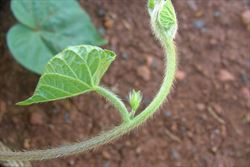
hairy younger stem (Photo: Sheldon Navie)
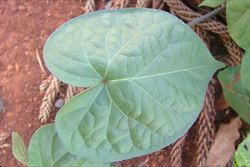
close-up of leaf (Photo: Sheldon Navie)
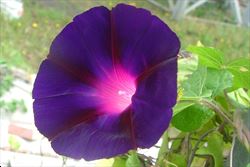
purplish flower (Photo: Sheldon Navie)

pinkish flower from side-on, showing the long and relatively broad sepals (Photo: Sheldon Navie)
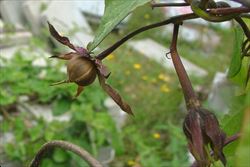
mature fruit (Photo: Sheldon Navie)
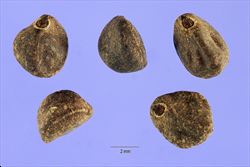
close-up of seeds (Photo: Steve Hurst at USDA PLANTS Database)

seedling (Photo: Sheldon Navie)
Scientific Name
Ipomoea purpurea (L.) Roth
Synonyms
Convolvulus purpureus L.
Family
Convolvulaceae
Common Names
annual morning glory, common morning glory, common morning-glory, common morningglory, morning glory, morningglory, purple morning glory, tall morning glory, tall morning-glory, tall morningglory
Origin
The exact native range of this species is obscure, however it is thought to have originated in tropical America.
Naturalised Distribution
Widely naturalised in the warmer parts of eastern Australia (i.e. eastern Queensland and the coastal districts of New South Wales). Also present in some inland parts of southern New South Wales (e.g. in the Griffith district).
Notes
Common morning glory (Ipomoea purpurea) is regarded as an environmental weed in New South Wales and Queensland, and as a potential environmental weed in Victoria. This species was introduced as a garden ornamental and is still occasionally grown in gardens. Unlike many of the other morning glory species, it is mainly a weed of agricultural areas and disturbed sites (e.g. crops, roadsides, parks, gardens, fence-lines and waste areas). However, it also invades bushland and riparian areas and can be a serious environmental weed in warm moist areas, where it chokes out native plants.
Common morning glory (Ipomoea purpurea) is present throughout the coastal districts of Queensland, being listed as an environmental weed on the Gold Coast and also present in the wet tropics in northern Queensland. It is a strong, twining, climber that is reported to grow into the canopy of sub-tropical rainforest in south-eastern Queensland, and its rampant growth is thought to be capable of destroying intact rainforest canopy.
This species is also listed as an environmental weed in north-eastern New South Wales, and is probably the third most troublesome morning glory in natural areas in this region. It is also one of the "exotic vines and scramblers" whose invasion is listed as a "key threatening process" in New South Wales.

